In fall, walleyes can be anywhere—say, six inches under the surface in 80
feet of water or tight to bottom in 10 feet. Sound challenging? It can be,
unless you know how walleyes drift off of
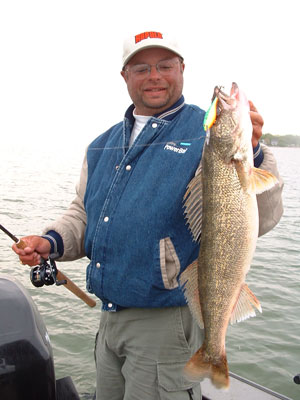 structure
and suspend in the vicinity of bait. Finding them is a looking game with
quality electronics; catching them is a straining game with planer boards,
spinners and crank baits. The pattern holds true wherever you are, from
Great Lakes to inland waters, and wherever walleyes are chasing baitfish.
Which, it turns out, is everywhere.
structure
and suspend in the vicinity of bait. Finding them is a looking game with
quality electronics; catching them is a straining game with planer boards,
spinners and crank baits. The pattern holds true wherever you are, from
Great Lakes to inland waters, and wherever walleyes are chasing baitfish.
Which, it turns out, is everywhere.
The Baiting Game
The bait connection betrays the walleye’s presence. In fall, when
walleyes ramp up their feeding before winter, the fish will never be far
from food. On the Great Lakes, you might see enormous pods of one- to
three-inch gizzard shad skittering on the surface or as big blobs on a
locator. Shiners and the like herd up as well on inland waters, and
predators are never far behind.
How do you find them? Start looking for structure on a map and then with
electronics. Points, humps and weed edges are all fair game. But when you
look with a quality locator that pinpoints fish and bait, such as Lowrance’s
X-16, the key is to veer away from the structure and look over open water.
If you’ve seen fish on structure at a certain level—15 feet, for
instance—you can bet they’ll be at that same depth over open water, from
hundreds of yards to half a mile away from the structure. Walleyes will do
this day and night. The most important thing to remember is not to glue
yourself to structure—the walleyes will wander away from it if bait is
present.
Search Mode
The best way to enter into search mode is to start trolling. This way you
can cover water and zigzag to find fish. It would be far too time-consuming
to jig or live-bait rig. Trolling, on the other hand, spreads lines to the
sides of the boat and behind it—the better to cover a swath of water at
different depths.
I always try to maximize my efforts with the most rods possible and the
greatest coverage. Enter planer boards, the handy devices that veer lines
away from the boat. With them, you can run more rods without tangling and
pull lures through more territory. My new favorites for boards are from
Church Tackle, which now makes smaller, more manageable models that still
track well away from the boat. The TX-6, which is about the size of a deck
of cards, is great for pulling crank baits or spinners with snap weights of
up to one ounce. Anything heavier will sink the board. Even small fish or a
piece of weed will sink it, which is a big help when you’re trying to keep
your lures clean. A large fish will sink the little board like a
bobber—something I love to see. With the TX-12, which is twice the size of
the TX-6, you can get away with weight to two ounces, which you might need
for deep spinnering.
Which brings us to my two favorite offerings in fall. While few people
fish spinners after summertime, the reliable crawler harness keeps working
through October and even into November. You can boost up a size or two with
your spinners in fall to tempt more big fish. If, for instance, you were
using No. 2 blades in summer, you now might want to try Nos. 4 and 5. The
heavier thrum is often just what the walleyes want when they’re starting to
feed with gusto before winter. And since baitfish, more than bugs, are the
main course of fall walleyes, try Northland’s holographic blades. They come
in silver shiner, gold shiner, golden perch and more colors to mimic
baitfish.
By November, though, I normally start switching to crankbaits. You can
move them faster and cover more water (2.0 or 2.3 mph for cranks vs. 1.1 mph
for crawlers), and since the fish are so keyed on baitfish, cranks will
often do the job even better. Experiment with cranks and crawlers to find
out. In the cool waters of fall, try running cranks and crawlers at the same
relatively slow speeds—say 1.2-1.4 mph. For the lures themselves, it’s hard
to beat Rapala Husky Jerks (in shallow and deep-running versions), Tail
Dancers and Shad Raps. Again, match the colors to the prevalent baitfish and
conditions—silvers around shiners and shad, brighter fluorescents in darker
or stained water. You can trick out your lures with additional color with
holoform tap from WTP, formerly known as Witchcraft. Add a strip of silver
or glow to the lure’s sides, something that’s particularly effective at
night.
If the structure is particularly steep or difficult to follow, you might
want to try leadcore. I like it if I’m on a break that twists and turns and
I’d have too much line out with boards. Even in 45 feet of water, you can
often get down to the fish zone with 75 to 85 feet of line out.
For rods, I use two models by Berkley in the Lightning Rod Signature
Series. One is the 7-foot, 10-inch offering. It has a heavier tip that will
handle heavier snap weights. If, however, I’m using lighter weights or
crankbaits, I switch to the 8-foot, 6-inch model, which has a more limber
tip that tends not to tear out hooks. Still, you can get away with weights
up to four ounces (say, if you’re bottom bouncing next summer) or
heavy-pulling cranks.
More than anything, targeting fall walleyes is a matter of perspective.
While it’s easy and familiar to stay close to structure, that’s not always
where the fish are. Open your mind to the possibility of roamers and
suspenders, and then go looking for them. They could be half a mile away
from your favorite reef or hump. But you’ll never know unless you try it.
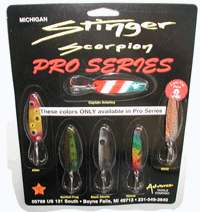
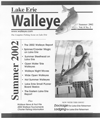

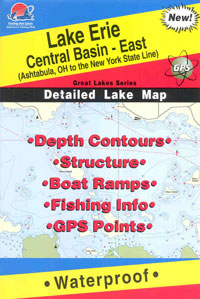
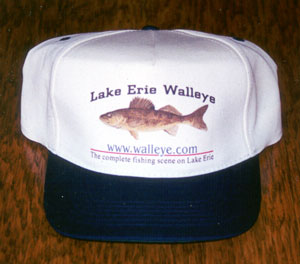
 structure
and suspend in the vicinity of bait. Finding them is a looking game with
quality electronics; catching them is a straining game with planer boards,
spinners and crank baits. The pattern holds true wherever you are, from
Great Lakes to inland waters, and wherever walleyes are chasing baitfish.
Which, it turns out, is everywhere.
structure
and suspend in the vicinity of bait. Finding them is a looking game with
quality electronics; catching them is a straining game with planer boards,
spinners and crank baits. The pattern holds true wherever you are, from
Great Lakes to inland waters, and wherever walleyes are chasing baitfish.
Which, it turns out, is everywhere.